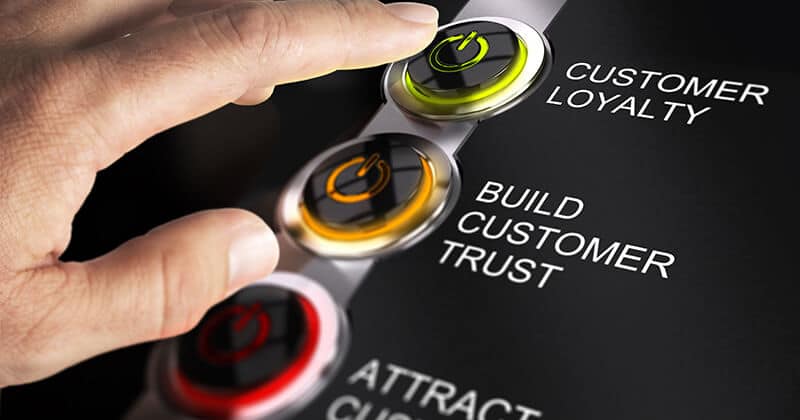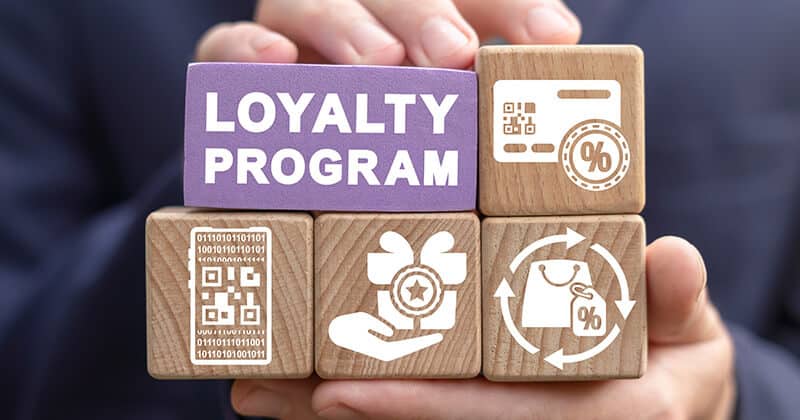What’s one of the secrets to long-term success? Two words: customer loyalty.
There’s no shortage of statistics that show just how important customer loyalty is.
Retaining your customers—that is, keeping them coming back to you again and again—is cost-effective. It’s five to 10 times cheaper than converting new clients.
What’s more, loyal customers spend up to 67% more. They might even be more likely to rave about how great you are to friends, neighbors, colleagues, and anyone else who will listen.
So how do you keep your customers loyal? Of course, you’ll want to maintain a high service quality. However, introducing innovative strategies like loyalty programs can change the game.
In this quick guide, we’ll explain loyalty programs and how they work. We’ll explore the types of loyalty programs and their benefits.
Then, we’ll show you how to set up your own program in a few easy steps. We’ll finish with some tips you can follow to get started today.
We all love to be rewarded, and your clients are no different. Use this to your business advantage, and everyone wins!
RELATED ARTICLE: Repeat Customer vs. New Customer: Which is Better?
What is a Loyalty Program?
A loyalty program is a system that rewards customers for their continued support.
You might offer a discount for their fifth service. Or you might give them a gift card after they refer you to a friend.
Whatever shape it takes, a loyalty program is about keeping customers coming back to you.

What are the Benefits of Loyalty Programs?
A happy customer is one thing. A loyal customer offers a whole other level of value.
Let’s look at some of the major benefits.
Increased Customer Retention
Customer retention measures how many existing customers choose you over your competition.
You want a high customer retention rate. In other words, you want a lot of your customers to do business with you again the next time they need your services.
How does a loyalty program help with retention?
When you offer a reward, customers feel valued. They feel like you appreciate their business and are willing to show it.
Expect these outcomes:
- Higher revenue: Returning customers spend more money over time.
- Steady income: Repeat customers are your bread and butter. They offer consistent business, which helps with cash flow and budgeting.
More Referrals
Referrals are when your customers recommend your business. You essentially attract more high-quality leads without extra marketing effort or spending.
Happy customers will naturally talk about your business. A little incentive via a loyalty program can boost this even more.
Expect these outcomes:
- New customers: Referrals bring in new clients. They might not have heard about your business otherwise.
- Cost-effective marketing: Word-of-mouth marketing is cheaper than other forms of advertising.
Better Customer Data
Data is an extremely valuable asset. Loyalty programs help you collect even more of it. This includes information about your customers’ preferences, buying habits, and service history.
You can see which services are most popular and which promotions work best. Use these insights to personalize your approach.
Expect these outcomes:
- More targeted marketing: Leverage data to create marketing campaigns that target specific customer groups with personalized messaging.
- Improved services: Understand what your customers like and refine your services to boost satisfaction levels.
FROM ONE OF OUR PARTNERS: Avoid These Mistakes When Building Customer Loyalty

Types of Loyalty Programs
There are several different types of loyalty programs you could adopt. You can even take features from a few and create your very own.
Here are some of the more common systems:
- Point-based programs are simple and encourage repeat business. Customers earn points with each purchase. They can redeem points for discounts or free services. This works well if your customers use your services often. But if they don’t, rewards might take time to accumulate.
- Tiered programs motivate higher spending. Customers get better rewards at higher levels. For example, they might start at a basic level and move up to premium levels with more benefits. This program promotes higher spending but can be tricky to manage.
- Paid programs give members exclusive benefits for a fee. Customers get special discounts or services in return. This type works well if your customers see value in the exclusive benefits. However, some might not want to pay upfront.
- Punch card programs are straightforward. Customers get a hole punch for each service, and after a set number of punches, they receive a reward. You might have a punch card for your local coffee shop. This option is great for businesses with repeat services but can be less engaging over time.
- Referral programs reward customers for bringing in new clients. This can be very cost-effective. It works well for attracting new customers. But your current customers need to take part actively for it to work.
FROM ONE OF OUR PARTNERS: The Evolution of Customer Loyalty Programs
How to Create a Customer Loyalty Program
Keen to get started? Follow these four steps to set up a customer loyalty program:
Step 1: Define Your Goals
Decide what you want to achieve with your loyalty program. Your goals could include increasing customer retention or more sales.
Step 2: Choose the Type of Program
Think about your goal. Select the type of loyalty program that will help you achieve it.
Consider your services and customers. For example, how often do they use your business? If the answer is very often, a point-based program might work. If it’s not very often, a referral program might be better.
Step 3: Set Up a Reward System
Map how customers will earn and redeem rewards. Decide how many points customers earn per dollar spent and what rewards they can get.
The rewards should be valuable, realistic, and affordable. You don’t need to blow your budget and give away a tropical vacation for every referred customer!
Make sure to set up a tracking system. You can use a spreadsheet or specialty software.
Step 4: Promote Your Program
Let your customers know about the loyalty program.
Use a few different channels to spread the word far and wide. Add a page on your website, send an email, and post about it on social media.
Make sure your staff understand the program’s mechanics so they can explain it to customers.
RELATED ARTICLE: 5 Ways to Get More Customer Reviews
Tips for Getting Started with a Customer Loyalty Plan Right Now
Here are some easy tips to help you start a customer loyalty plan:
- Brainstorm potential rewards. Think about what your customers would value. This could be discounts, complementary services, or even a charitable donation on their behalf.
- Decide on the system. Choose a loyalty program that fits your business. It should align with your goals.
- Set clear rules. Define how customers will earn points and what they can get with them. Make sure the rules are simple and easy to understand.
- Plan your marketing. Come up with ideas for a marketing campaign promoting your program. You might even run paid ads to existing customers to encourage them to hire you again.


